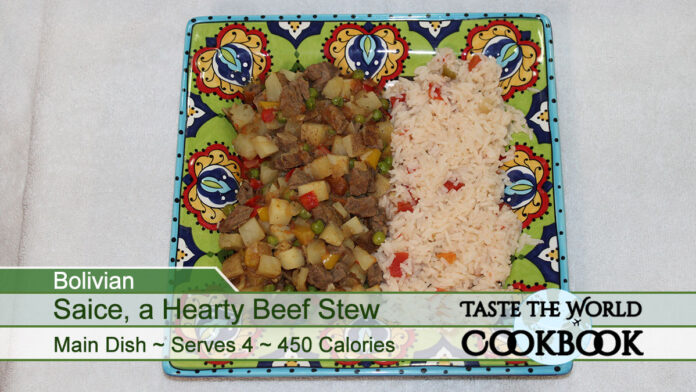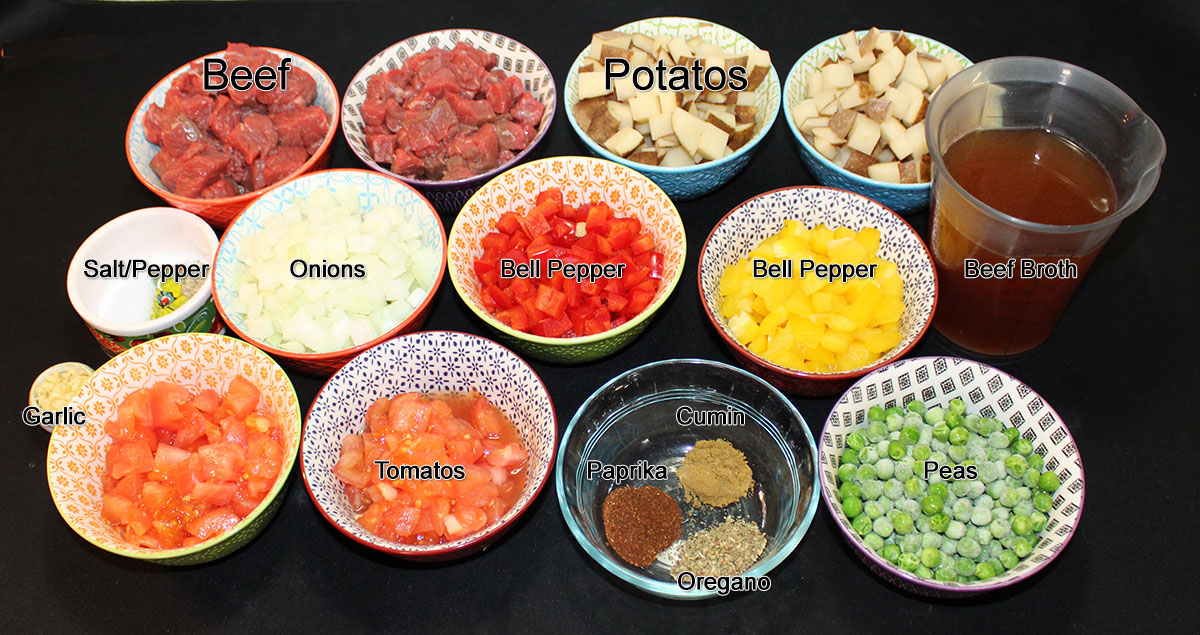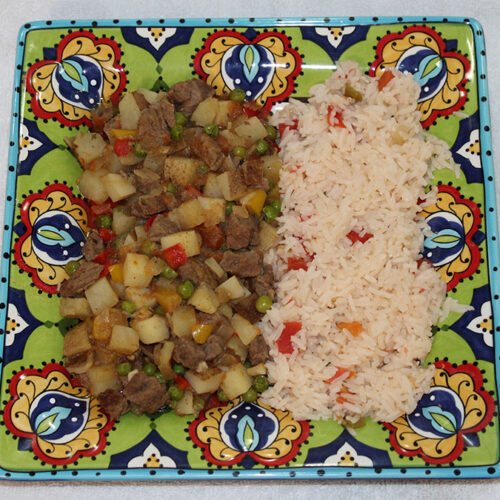Greetings, fellow food and travel enthusiasts! Today we embark on a culinary journey to the heart of South America, where the vibrant city of Tarija, Bolivia, awaits. Nestled in Bolivia’s southern reaches, Tarija is a hidden gem renowned not only for its appealing metropolitan lifestyle and stunning tourist spots, but for a delicious, hearty dish that has become synonymous with the city’s culinary identity – the savory Bolivian Saice.
Imagine a warm, comforting bowl of Saice on a crisp evening. The aroma of tender beef, earthy potatoes, sweet peas, and a medley of spices wafting through the air, beckoning you to take a hearty bite. This traditional Bolivian beef stew is a veritable celebration of flavors, textures, and colors, sure to satiate your palate and warm your heart.
In this blog post, we will traverse the rich history of Bolivian Saice, and then dive into the various ways to prepare this hearty stew. But we won’t stop there! This culinary exploration will take us through the enchanting streets of Tarija, where we will discover the best accommodations and featured restaurants offering authentic Bolivian cuisine.
Finally, you’ll learn how to bring the spirit of Tarija’s cuisine to your kitchen with a detailed guide on preparing your very own Bolivian Saice, along with other recipes that pair well with this dish.
So, ready your culinary curiosity and your appetite for adventure as we delve into this exciting exploration of the beloved Saice and the vibrant city of Tarija. Get ready to be inspired!
Table of contents
Spicing Up Tradition: Versatile Twists on Classic Bolivian Saice
To kick things off, let’s delve into the world of Saice, a dish as diverse as the people who love it. What makes Bolivian Saice a truly fascinating culinary marvel is its sheer adaptability. Different regions and households in Bolivia have their own unique versions of this delectable dish, each adding a personal touch to the classic recipe.
Firstly, some prefer to use different types of meat in their Saice. While the traditional recipe calls for beef, you might come across versions using lamb or even chicken for a lighter twist. This swap doesn’t merely change the flavor profile, but it also adjusts the cooking time. Lamb and chicken generally cook quicker than beef, meaning you can have your Saice on the table in less time.
Transitioning to the world of vegetables, many cooks love to add a variety of veggies to their Saice for extra color and nutrients. Carrots, corn, and even squash could find their way into the pot. Not only do these additions add a vibrant visual appeal to the dish, but they also bring unique flavors and textures, making each bite of Saice a delightful surprise.
Next up, let’s consider the spices. Traditional Saice uses a medley of cumin, paprika, and oregano. However, for those who prefer a bit of heat in their food, adding a dash of chili powder or some fresh jalapenos can elevate the stew’s warmth. Conversely, for those who prefer milder flavors, reducing the amount of spice or adding a splash of cream can make the Saice a comforting, creamy delight.
Last but not least, Saice can be served alongside different side dishes for a complete meal. While rice is the most common accompaniment, quinoa or warm bread also pair beautifully with the hearty stew.
In summary, there’s an array of ways to make Bolivian Saice your own. By experimenting with various ingredients, you can create a Saice that perfectly caters to your palate. This diversity is what makes Saice a beloved dish throughout Bolivia and beyond. So don’t be afraid to add your twist and create your own version of this Bolivian classic.
Savoring Saice: The Art of Storing Your Bolivian Stew
Having created a pot full of tantalizing Bolivian Saice, you may find yourself facing a happy problem – leftovers. Fortunately, Saice stores exceptionally well, and some argue that it tastes even better the next day, after the flavors have had ample time to meld together. So, let’s explore how to properly store your Saice to maintain its deliciousness for days to come.
Firstly, allow your Saice to cool down to room temperature after cooking. This step is crucial because putting hot food directly into your fridge can raise its overall temperature, potentially leading to food safety issues. As a bonus, this cooling period gives the flavors in your Saice extra time to develop.
Once the stew has cooled, transfer it into airtight containers. These could be plastic food storage containers, glass containers, or even mason jars. The key is to ensure a secure seal to keep the Saice fresh and to prevent any other odors in the fridge from affecting the stew’s flavor.
When it comes to reheating, you have two great options. For smaller portions, a couple of minutes in the microwave will do the trick. Just be sure to cover the dish to avoid splatter. For larger portions, consider reheating the Saice on the stove over low to medium heat, stirring occasionally until it’s heated through.
Interestingly, Saice is also freezer-friendly. To freeze, simply portion the cooled stew into freezer-safe containers or bags, leaving some room for expansion. When the craving strikes, thaw overnight in the fridge and then reheat as above.
To sum up, properly storing your Bolivian Saice not only maximizes the shelf life of your leftovers but can also enhance the depth of flavor in the stew. By taking these simple steps, you can enjoy the comforting taste of Saice any day of the week. Remember, a little planning goes a long way in keeping your Saice as delicious as the day it was made.
Saice Through the Ages: Tracing the Historical Roots of Bolivian Stew
Unraveling the story of Saice is like peeling back layers of Bolivian history, each layer revealing intriguing glimpses into the nation’s rich culinary tapestry. This humble yet flavor-packed stew carries with it centuries of tradition, evolving over time and transcending borders.
The tale of Saice begins in the fertile lands of Bolivia, where it emerged as a hearty meal for hard-working farmers and laborers. Utilizing locally available ingredients such as beef, potatoes, and peas, Saice provided much-needed sustenance after a long day’s work. However, the simple stew quickly grew in popularity, moving beyond the rural areas and into the bustling cities.
As Bolivia’s cities grew and diversified, so did the recipe for Saice. Culinary influences from neighboring countries began to seep into Bolivian kitchens, bringing with them a palette of new flavors and ingredients. A prime example of this is the incorporation of spices such as cumin and paprika, commonly used in Spanish and South American cuisines. This fusion of flavors contributed to the unique taste profile of Saice, turning it from a humble stew into a dish of complex and satisfying flavors.
In modern times, Saice has cemented its place as a staple of Bolivian cuisine. Its robust flavor and comforting warmth make it a beloved dish across the nation and a source of national pride. Its versatility also appeals to the modern palate, as it can easily be adapted to suit different dietary preferences or incorporate new ingredients.
To wrap things up, Saice’s rich history reflects the evolution of Bolivian society itself. From rural fields to urban kitchens, Saice has traversed a long path, absorbing influences and adapting to changing times. Yet, at its core, it remains a comforting and delicious staple, a testament to Bolivia’s enduring culinary traditions. As we continue to enjoy this hearty stew, we also savor a piece of Bolivia’s vibrant history.
Tarija Unveiled: A Snapshot of Bolivia’s Metropolitan Jewel
Bursting with charm, Tarija is Bolivia’s captivating city tucked away in the country’s southern region. Known as “La Ciudad de las Flores” or “The City of Flowers”, Tarija is a captivating blend of tradition and modernity, where metropolitan allure coexists harmoniously with its rich cultural roots.


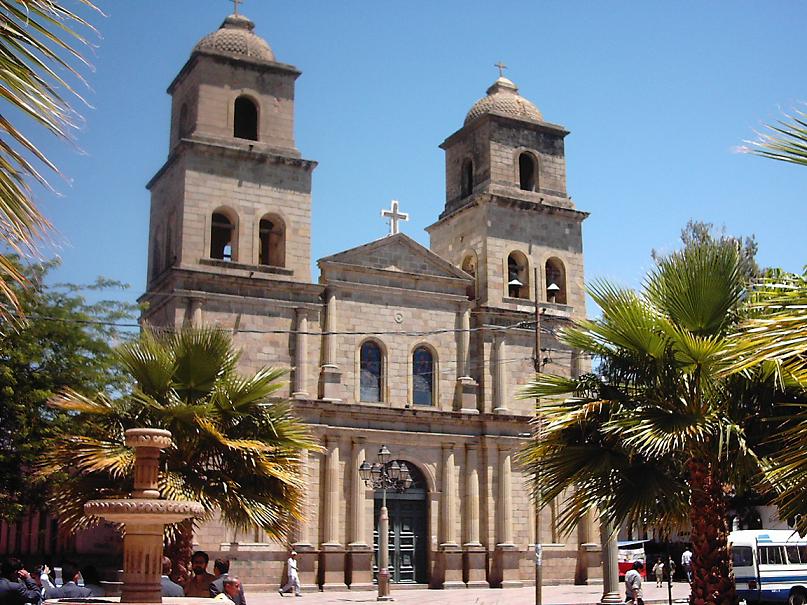
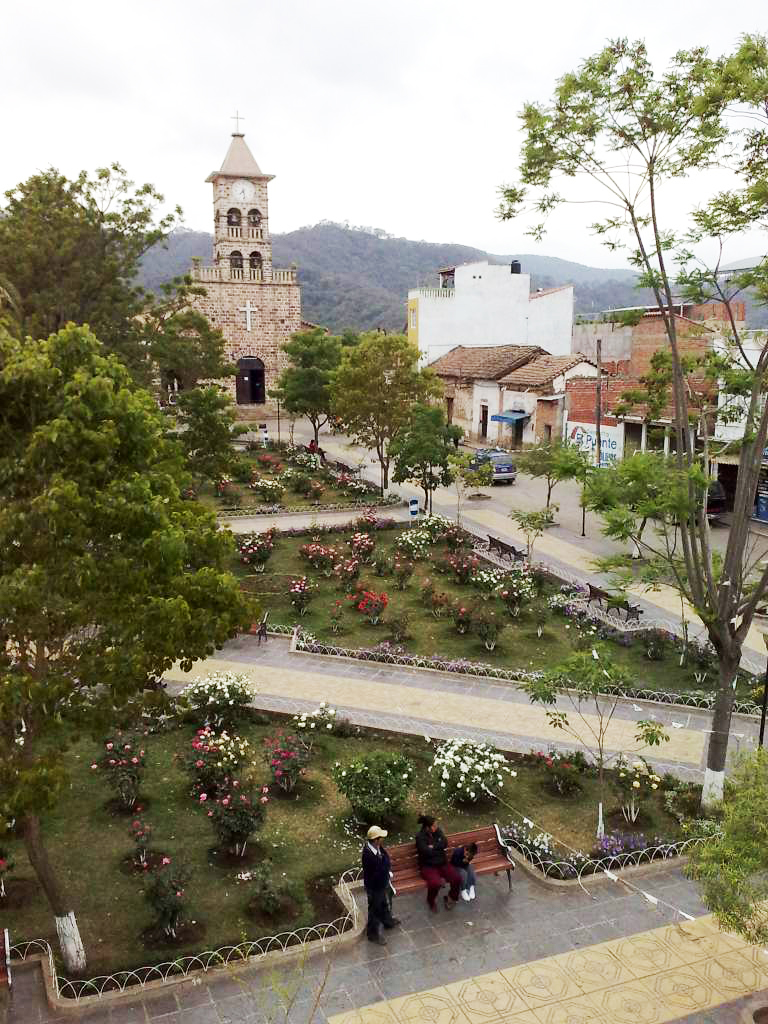
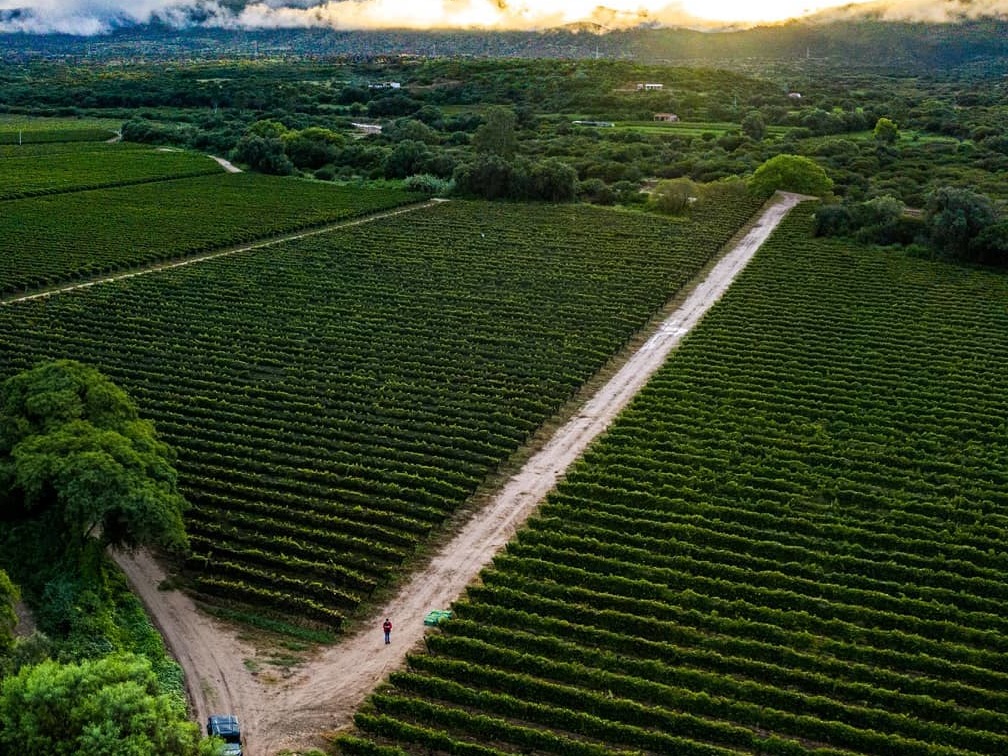
Upon first glimpse of Tarija, you’re greeted by its vibrant urban life. The city center buzzes with activity, teeming with boutique shops, exquisite restaurants, and bustling marketplaces. As you meander through the city streets, marvel at the stunning colonial architecture that harkens back to Tarija’s Spanish colonial past. These beautifully preserved buildings lend the city a distinctive charm and a sense of stepping back in time.
Shifting gears to Tarija’s natural beauty, the city is nestled in a valley surrounded by picturesque hills. Its mild climate and abundant sunshine make it a prime spot for viticulture. Indeed, Tarija is renowned for its thriving wine industry. The vineyards surrounding the city not only produce some of Bolivia’s best wines, but they also serve as idyllic backdrops for wine tours, providing an unforgettable gastronomic experience for visitors.
One cannot talk about Tarija without mentioning its dynamic cultural scene. The city is a hotbed of Bolivian music and dance, with regular performances and festivals punctuating the city’s calendar. Music echoes through the city streets as locals and tourists alike sway to the rhythms of traditional Bolivian tunes.
In conclusion, Tarija is a city that entices all your senses, from the visual splendor of its colonial architecture and natural landscapes, to the tantalizing flavors of its cuisine and wines, to the captivating sounds of its music. Whether you’re a history buff, a nature lover, or a gastronome, Tarija has something to offer for everyone. This metropolitan jewel is not just a city; it’s an experience that leaves you with memories to cherish.
Unforgettable Escapades: Embracing the Tourist Trail in Tarija, Bolivia
Tarija, Bolivia, a city that exudes vibrancy and charm, has rapidly emerged as a sought-after destination for discerning travelers. Rich in history, culture, and natural beauty, Tarija offers a wealth of attractions that promise a memorable exploration of this Bolivian gem.
Kickstarting your tour in Tarija, immerse yourself in the city’s vibrant history by visiting the Casa Dorada, a splendid golden house turned museum that showcases Tarija’s storied past. Further satiate your historical curiosity at the Paleontology Museum, where fascinating fossil displays offer a peek into prehistoric times.
Next, turn your gaze to Tarija’s natural wonders. Take a leisurely stroll in the Parque La Loma, a serene oasis offering panoramic views of the city. For a more adventurous outing, explore the Reserva Biológica Cordillera de Sama, a stunning nature reserve teeming with wildlife and a variety of flora.
For the wine connoisseurs, a trip to Tarija would be incomplete without venturing into the city’s famed vineyards. Tarija’s wineries offer tours where you can explore the wine-making process, amble through the lush vineyards, and of course, savor the exquisite wines. Don’t miss the opportunity to sample Tarija’s renowned Tannat, a rich, full-bodied red wine that has put Bolivia on the global viticulture map.
Cultural enthusiasts will also find Tarija’s lively music and dance scene captivating. The city is known for its traditional Bolivian dances like Cueca and Chacarera, which are frequently performed at cultural festivals and local peñas (music clubs).
In conclusion, tourism in Tarija is a feast for the senses, offering an array of experiences that cater to a variety of interests. From historical and cultural explorations to natural escapades and gastronomic delights, Tarija promises an immersive journey into the heart of Bolivia. So pack your bags, set your itinerary, and get ready to experience the vibrant and captivating world of Tarija.
Finding Your Home Away From Home: Top Accommodations in Tarija, Bolivia
Tarija, Bolivia, a city renowned for its historical charm and vibrant culture, also boasts a range of accommodations that cater to diverse tastes and budgets. Whether you’re seeking a luxury experience, a cozy guesthouse, or a homestay that lets you experience local life, Tarija has you covered.
Starting on a lavish note, those seeking a luxury retreat should consider the Terravina Hotel del Vino. As the name suggests, this hotel blends top-tier comfort with a tribute to Tarija’s famous wine culture. With its elegantly furnished rooms, exceptional service, and an on-site restaurant that serves local cuisine paired with exquisite wines, Terravina promises an experience steeped in comfort and indulgence.
For travelers seeking a balance of comfort and budget, mid-range hotels like the Hotel Los Ceibos and Hotel Mitru provide excellent choices. These hotels offer comfortable rooms, friendly service, and central locations, allowing guests easy access to Tarija’s main attractions.
Next, let’s explore the charm of Tarija’s bed and breakfasts and guesthouses. Casa de la Cultura Bed & Breakfast is a popular choice among travelers. With its homey atmosphere, personalized service, and delicious homemade breakfast, it offers a truly immersive stay.
In addition, Tarija offers an array of homestays for those seeking an authentic local experience. Platforms like Airbnb provide numerous listings, from apartments in the heart of the city to rustic homes in the countryside. These options provide an excellent opportunity to experience Tarija’s culture firsthand.
Wrapping up, accommodations in Tarija cater to every type of traveler. Whether you’re seeking the pampered luxury of a high-end hotel, the convenient comfort of a mid-range inn, or the local charm of a guesthouse or homestay, you’ll find a place to call home in Tarija. So, delve into the world of Tarija accommodations and find your perfect base for exploring this captivating city.
Taste of Tarija: A Journey into Bolivia’s Culinary Wonderland
The city of Tarija, rich in history and culture, also claims a delightful culinary heritage that has foodies around the world taking notice. Tarija’s cuisine is a tantalizing blend of traditional Bolivian flavors and innovative fusions, a testament to the city’s evolving gastronomic scene.
In the heart of Tarija, street food stalls, markets, and restaurants abound, each offering a piece of the city’s flavorful palate. Start your culinary journey with ‘Saice’, the famous Bolivian stew, which is particularly adored in Tarija. This hearty stew, made with beef, peas, and potatoes, and accompanied by rice, is an emblem of the city’s culinary tradition.
Moving on, you must not miss ‘Anticuchos,’ skewers of beef heart marinated in robust spices, grilled to perfection, and usually served with potatoes and a side of spicy peanut sauce. For those with a penchant for heat, ‘Saice Tarijeño,’ a version of Saice with a fiery kick, is a must-try.
But Tarija’s culinary landscape isn’t just about hearty meals. It also offers a variety of sweets to satisfy your sweet tooth. ‘Empanadas Tucumanas,’ sweet empanadas filled with custard or jam, are a local favorite, perfect for an afternoon snack or dessert.
Completing the gastronomic experience, Tarija is Bolivia’s wine country. Its vineyards produce some of the country’s best wines, adding a delightful finish to any meal. Whether you’re a fan of robust reds or crisp whites, Tarija’s wines provide the perfect accompaniment to its vibrant cuisine.
In conclusion, Tarija’s cuisine is a feast for the senses, blending traditional recipes with contemporary flavors. Its array of dishes, desserts, and wines provide a mouthwatering insight into the city’s rich culinary heritage. So, get ready to embark on a delicious journey through Tarija, one bite and sip at a time.
– Featured Restaraunt –
La Cocina Ristorante
Address: Gral. Trigo 719, Tarija, Bolivia
Telephone: +591 75133958
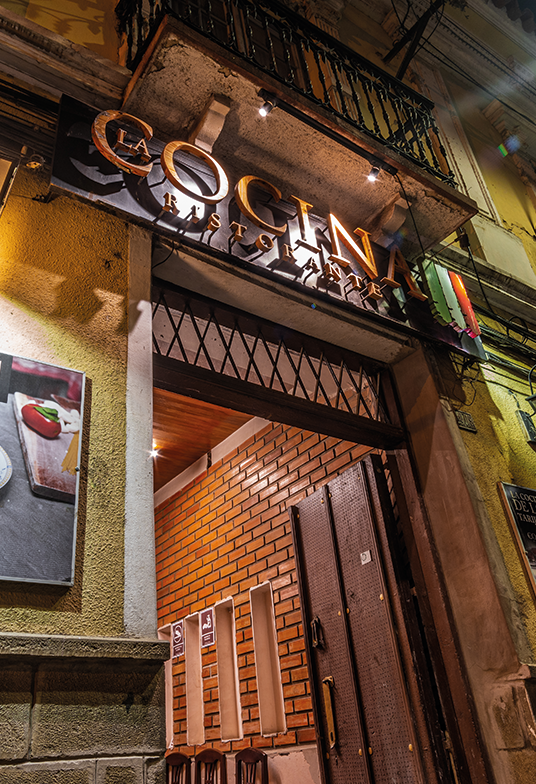
The “La Cocina,” is a cherished family enterprise that has been captivating food enthusiasts with a delectable array of pizzas and pasta for the past four years. Inspired by the owners’ deep-seated passion for cooking and their enriching experiences in Italy, “La Cocina” offers a unique culinary journey.
Having successfully established a footprint in the industry and enriched by their wealth of experience, the visionary owners have embarked on an exciting expansion. They are delighted to introduce a fresh pasta factory, promising to bring a new wave of Italian culinary artistry to the city of Tarija. “La Cocina” continues to evolve, yet remains committed to delighting palates and enriching our food landscape with its authentic, exquisite offerings.
.
Mastering the Magic of Bolivian Saice: An Introduction to the Art of Stew Making
There’s a certain magic that comes with creating a hearty, delicious stew-like Bolivian Saice. Perhaps it’s the way simple ingredients transform into a rich and flavorful dish, or maybe it’s the joy of sharing a homemade meal that represents a piece of Bolivia’s culinary heart. Either way, preparing Saice at home is an endeavor that’s both rewarding and delectably satisfying.
At its core, Saice is a traditional Bolivian stew that celebrates the country’s love for hearty, comforting meals. Made with a blend of beef, peas, potatoes, and a mix of spices, this dish is a testament to the power of simple, wholesome ingredients. The process of making Saice invites you into the rhythm of Bolivian cooking, slow and patient, allowing the flavors to meld and intensify over time.
Interestingly, just as Bolivia has many faces, so does Saice. This stew varies from region to region, family to family, each adding their unique twist. Some add a dash of wine for depth, others prefer to use different types of meat, or even throw in some vegetables not included in the traditional recipe. This flexibility is part of what makes Saice so special — it’s a dish that invites creativity and personal touch.
As we dive into the steps of preparing this delightful stew, remember that cooking Saice, like any traditional recipe, is not just about following instructions. It’s about immersing yourself in the process, understanding the ingredients, and most importantly, enjoying the journey. After all, Bolivian Saice is more than just a dish; it’s a culinary tradition, a slice of Bolivia’s rich cultural heritage.
So, grab your apron, roll up your sleeves, and get ready to unlock the secrets of Bolivian Saice. Let’s embark on this flavorful journey together, step by step, stirring our way to a pot of rich, hearty stew. Trust me, your taste buds will thank you.
Gathering the Goodness: Assembling Your Bolivian Saice Ingredient Line-Up
As we venture further into our culinary journey towards creating the delectable Bolivian Saice, we come to a critical phase – assembling the ingredients. It’s in these wholesome components that the soul of our hearty stew resides, each adding a unique layer to the dish’s symphony of flavors.
At the heart of Bolivian Saice are three key ingredients – beef, peas, and potatoes. The beef lends a richness to the stew, while the peas and potatoes contribute a comforting, earthy quality. Each of these ingredients acts as the building blocks of Saice, offering a hearty foundation upon which the other flavors can shine.
Next up, we have the spices, the unsung heroes of our stew. A blend of garlic, cumin, oregano, and aji (Bolivian chili powder), these spices breathe life into the Saice, bringing a complexity of flavors that transform the dish from simple to sensational. Spices are the difference between a good stew and a great one – and for Saice, they are non-negotiable.
But there’s more to Saice than just the base ingredients and spices. Other additions like onions, bell peppers, and tomatoes bring a subtle sweetness and a hint of tanginess, enhancing the overall flavor profile of the stew. Moreover, these veggies also contribute to the dish’s texture, providing a satisfying contrast to the tender meat and soft potatoes.
Finally, to tie everything together, we’ll be using a rich beef broth as the cooking liquid. The broth not only provides moisture for the cooking process but also infuses the ingredients with an additional layer of savory goodness.
In conclusion, preparing Bolivian Saice is a delicate balancing act, requiring the right blend of ingredients to create the perfect stew. Each component plays a crucial role, combining to create a dish that’s hearty, comforting, and teeming with flavors. So, let’s roll up our sleeves and get ready to gather our ingredients – the next step in our Saice-making adventure awaits!
Equipment Needed
- 1 Dutch Oven
- 1 Knife
- 1 Cutting Board
- 1 Slotted Spoon
Ingredients Needed
- 2 tbsp vegetable oil
- 1½ lbs beef top round diced
- salt to taste
- black pepper to taste
- 1 large onion finely chopped
- 2 cloves garlic minced
- 2 red bell peppers chopped
- 2 green bell peppers chopped
- 2 large tomatoes peeled and chopped
- 1 teaspoon ground cumin
- 1 teaspoon sweet paprika
- 1 teaspoon dried oregano
- 2 cups beef broth
- 2 large red potatoes diced
- 1 cup peas
- fresh parsley finely chopped, for garnish
- cooked rice for serving
How to Cook This Bolivian Saice Recipe
Time needed: 1 hour and 20 minutes
Cooking Directions for Bolivian Saice
- Cook the Beef
Heat the 2 tbsp vegetable oil in a large pot over medium heat. Add the 1½ lbs beef top round and season with salt and black pepper. Cook until browned, then remove and set aside.
- Cook the Vegetables
In the same pot, add the chopped 1 large onion, minced 2 cloves garlic, chopped 2 red bell peppers, 2 green bell peppers, and 2 large tomatoes. Stir and cook until the onions become translucent and the vegetables soften.
- Spice the Dish
Return the browned beef to the pot, add the 1 teaspoon ground cumin, 1 teaspoon sweet paprika, and 1 teaspoon dried oregano. Stir well to mix the spices with the beef and vegetables.
- Add the Potatoes and Peas
Add the 2 cups beef broth, diced 2 large red potatoes, and 1 cup peas to the pot. Bring to a boil, then reduce the heat to low, cover, and let it simmer for about 30-40 minutes, or until the potatoes and peas are cooked and the flavors have melded together.
- Season and Serve
Adjust the seasoning if needed. Ladle the stew into bowls, garnish with fresh parsley, and serve hot with a side of cooked rice.
If you liked this dish please Rate This Recipe and leave a comment.
Savory Bolivian Saice: Hearty Beef Stew
Please Rate this Recipe
Equipment
- 1 Knife
Ingredients
- 2 tbsp vegetable oil
- 1½ lbs beef top round diced
- salt to taste
- black pepper to taste
- 1 large onion finely chopped
- 2 cloves garlic minced
- 1 red bell pepper chopped
- 1 yellow bell pepper chopped
- 2 large tomatoes peeled and chopped
- 1 teaspoon ground cumin
- 1 teaspoon sweet paprika
- 1 teaspoon dried oregano
- 2 cups beef broth
- 2 large red potatoes diced
- 1 cup peas
- fresh parsley finely chopped, for garnish
- cooked rice for serving
Instructions
- Heat the 2 tbsp vegetable oil in a large pot over medium heat. Add the 1½ lbs beef top round and season with salt and black pepper. Cook until browned, then remove and set aside.
- In the same pot, add the chopped 1 large onion, minced 2 cloves garlic, chopped 1 red bell pepper, 1 yellow bell pepper, and 2 large tomatoes. Stir and cook until the onions become translucent and the vegetables soften.
- Return the browned beef to the pot, add the 1 teaspoon ground cumin, 1 teaspoon sweet paprika, and 1 teaspoon dried oregano. Stir well to mix the spices with the beef and vegetables.
- Add the 2 cups beef broth, diced 2 large red potatoes, and 1 cup peas to the pot. Bring to a boil, then reduce the heat to low, cover, and let it simmer for about 30-40 minutes, or until the potatoes and peas are cooked and the flavors have melded together.
- Adjust the seasoning if needed. Ladle the stew into bowls, garnish with the fresh parsley, and serve hot with a side of cooked rice.
Notes
- Adjust the spices according to your personal taste. Add more cumin or paprika if you prefer a stronger flavor.
- This dish tastes even better the next day after the flavors have had time to meld together.
- You can also add other vegetables you have on hand such as carrots or corn.
Nutrition
Perfect Pairings: Delectable Dishes to Complement Your Bolivian Saice
Bolivian Saice, with its rich flavors and hearty texture, stands as a star dish in its own right. Yet, part of its charm lies in its versatility and the ease with which it pairs with other culinary delights. So, let’s venture further and explore some other recipes that complement our savory Saice beautifully. Whether it’s a simple side, a refreshing salad, or a sweet dessert, these dishes will round out your meal, elevating your Saice experience to new, delectable heights. Get ready to discover the perfect partners for your Bolivian Saice and transform your dinner table into a Bolivian feast!
As we come to the end of our flavorful journey through the creation and exploration of Bolivian Saice, it’s important to take a moment to reflect on what we’ve discovered. We’ve not only learned how to prepare a delicious traditional Bolivian stew but also delved deeper into the rich culture and history that surround this dish.
Through understanding the various ways to make Saice, how to store it, and its origins, we’ve immersed ourselves in a culinary tradition steeped in Bolivian history. We’ve ventured through the metropolitan city of Tarija, taken a tour of its vibrant tourism scene, and explored its myriad accommodations.
Most importantly, we’ve savored the cuisine of Tarija, discovering the city’s distinctive flavors and the art of pairing our sumptuous Saice with complementary dishes to create a complete, satisfying meal.
In the end, cooking and enjoying Bolivian Saice isn’t merely about satisfying our hunger, it’s about appreciating a culinary tradition that carries with it the story of a vibrant culture. It’s my hope that this journey has not only filled your kitchen with tantalizing aromas but also sparked a love for Bolivian cuisine and a desire to continue exploring the world through food.
So, here’s to the many delightful meals that await you, and may the magic of Bolivian Saice bring a sprinkle of Bolivia’s culinary charm to your dinner table. Until our next food journey, bon appétit!
Photo Credits:
- By Taste The World Cookbook – Copyright 2023 All rights reserved.
- By La Cocina – https://www.facebook.com/LaCocinaTarija/photos/pb.100040319604807.-2207520000./4532642836773565/
- By Evel – Own work, CC BY-SA 3.0, https://commons.wikimedia.org/w/index.php?curid=28788872
- By Evel – Own work, CC BY-SA 3.0, https://commons.wikimedia.org/w/index.php?curid=28788973
- By Andres MacLean – @theboliviantraveler en Instagram, CC BY-SA 4.0, https://commons.wikimedia.org/w/index.php?curid=117553475
- By Sean Mulry – originally posted to Flickr as [1], CC BY 2.0, https://commons.wikimedia.org/w/index.php?curid=7768330
- By Fchgds – Own work, CC BY-SA 3.0, https://commons.wikimedia.org/w/index.php?curid=20021125
